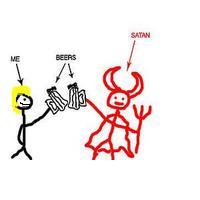The writing isn't beautiful but it's competent story-telling after a slow beginning (lots of dangling threads to drop.)
A big part of the story is Norway's role in WWII. Norway of course was occupied by the Nazis during the War but that's about all I know since reading The Moon is Down doesn't count.
The Nazis occupied Norway from April 9, 1940 to May 8, 1945. The Norwegian version of the Nazi party was Nasjonal Samling. The book mentions Norwegians who fought on the Nazi side which was news to me. Wikipedia says:
"Furthermore, about 15,000 Norwegians volunteered for combat duty on the Nazi side; of the 6,000 sent into action as part of the Germanic SS, most were sent to the Eastern front."
Which matches what's in the book.
The head of the Nasjonal Samling was the now infamous Vidkun Quisling, probably another name whose descendants all rushed to change like Hitler and Vichy. He was executed in October of 1945 and has the distinction of being hated by the Nazis and everyone else.
Milorg was the main of the Norwegian Resistance.
There is a lot of talk in the book about the Waffen SS, which I frankly had barely heard of. The Waffen was the military wing of the Schutzstaffel and was separate from the army, per Hitler's wishes so he could have his own personal police/army after the war was over. Originally composed of only the master race types, they eventually allowed foreigners to join which is how Norwegians came to serve in it. Waffen was declared a criminal organization at Nuremberg which some people say is unfair. They were just military, not like the rest of the SS. I really have no idea what the answer is but SS veterans were denied pension until they sued the West German government in the 1960's.
The Norwegian Parliament is called the Storting ("great thing.")
Oslo has the distinction of being one of the largest world capitals by land area and has abundant green spaces.

No comments:
Post a Comment